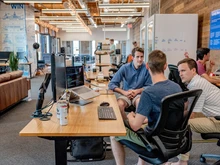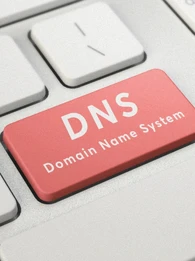
It’s official: Thursdays are the new Fridays.
Thursday is the most popular day for commuters to meet after work for evening socials according to recent TFL data.[i] Furthermore, access control data shows office occupancy peaking at 46% on Wednesdays, compared to only 35% on Mondays and less than 30% on Fridays,[ii] It’s clear that our patterns of working have undergone a significant shift towards hybrid work.
Commuting to the office only on Tuesdays, Wednesdays and Thursdays, whilst working from home for the rest of the week has become a fairly common working pattern.[iii] And it’s more than just a trend; it’s a movement that’s causing a seismic shift in employee behaviour, reshaping office landscapes across the country.
But like most things, there’s always a catch. What might seem great for employees is creating challenges for organisations – unpredictable trends in office usage with difficulty arranging in-person collaboration amid escalating property costs. The Tuesday-Wednesday-Thursday work pattern also poses another challenge – what do we do with our buildings on the unwanted Mondays and Fridays?
The dilemma of empty days
More than one-third of desks in offices around the globe are unoccupied all week,[iv] and many organisations have long-term leases that they are still obligated to pay, even if the space is empty. Many are downsizing their office spaces to cut costs as a result of low occupancy levels. ESG ratings of office spaces are driving a ”Flight to Quality”[v] as organisations such as HSBC plan to move into smaller, greener and more connected buildings.[vi]
Office setups with assigned desks for each employee must give way to a leaner, shared desk model. This shift is necessary to minimise unused office space while accommodating more employees throughout the week, with more efficient use of real estate assets. Put simply, organisations must do more with their empty space.
But that’s only half the story.
Magnets vs Mandates
Let’s start with a question: what is the purpose of the office? It needs to be more than just a desk. The office can be a destination designed to connect with employees, delight visitors and showcase the company brand. The office can provide a wide range of various work settings for different types of work: collaboration, communication, creativity and concentration. Superbly designed offices understand the need for quiet spaces for focused work, coupled with the buzz of collaborative settings to bring people together.
When executed well, these types of offices make you feel inspired and energised by the experience. You want to go back again and reconnect with colleagues. The office can become more.
Taking the approach of an office magnet can create opportunities to distribute office occupancy more evenly throughout the week too. For example, organisations might encourage employees with unique incentives and experiences. From team “lunch and learns” and curated in-office events to on-site childcare services for staff and anchor days – where each team is encouraged to attend a suggested day of the week to facilitate in-office collaboration – these incentives act as a great way to prevent overcrowding on certain days.[vii]
In contrast, the mandate approach sets a different tone with specific attendance requirements. While methods such as tying pay to office attendance might seem effective,[viii] it’s a less popular option amongst today’s workforce that values flexibility and would seek work elsewhere to find it.[ix]
Employers must foster collaboration, allowing people to choose to be part of something that provides them value, rather than being forced to. The office is not just a place to work, but a place where employees want to be.
And to enable this effectively, we need a way of organising people’s schedules to make this coming together easier.
Technology’s role in making this change
Over three quarters (76.8%) of employees consider technology as the most important element for success in a hybrid work model.[x] It plays a vital role in helping organisations adapt to the evolving workweek where tools and systems can facilitate scheduling, monitor occupancy and provide data-driven insights to optimise office usage.
Employing technology like workplace reservations software, colleagues can understand when their key people are planning to come into the office and plan their lives accordingly. Organisations also gain insight into occupancy patterns that allows them to right-size the workplace to power productivity.
With an effective workplace reservations system, businesses can provide users with greater functionality for office attendance with real-time occupancy updates or mobile check-ins for a smooth booking experience. It empowers employees to search for and reserve desk space before heading to the office, guaranteeing them workspaces alongside their colleagues with the right resources, precisely when and where they need it, on any day of the week.
But technology’s role doesn’t end there. It can employ gentle reminders, effectively ensuring that employees stay committed to their in-office schedules. Picture this: a notification pops up on an employee’s desktop while working from home, almost like a digital tap on the shoulder, saying, “Beth is in the office on Friday, would you like to join?”. These subtle nudges serve as digital breadcrumbs that can lead employees back to the office, keeping them engaged and encouraging collaboration through office days.
Even email updates about upcoming in-office events can remind employees of the tangible benefits of being in the office, while simultaneously creating an aura of excitement and anticipation. It’s a digital cue that makes the office the place to be.
Balancing the shift
Given that flexibility and autonomy are valued highly amongst the workforce, it’s unrealistic to think we’ll ever go back to the traditional workweek. And frankly, that’s a good thing.
However, this transformation must be handled in the right way, so that the new working pattern works for everyone. The shift means handling office occupancy the right way as well as the need to make the most of office space on Mondays and Fridays.
Enter technology, the linchpin in bringing balance to the scales. It provides organisations with the tools to synchronise office attendance seamlessly, optimise space utilisation and gather valuable insights. But technology alone is not the sole answer. Organisations must look at their own policies and internal processes to find the right way to rekindle the spirit of in-office collaboration throughout the week.
In truth, it’s not about breaking the midweek mould, it’s about unlocking the full potential of our workplaces. And organisations now have the tools to do so.
[i] https://www.theguardian.com/business/2022/may/24/thursday-new-friday-uk-returns-to-the-office-midweek-days-remote-working
[ii] https://www.kastle.com/wednesdays-are-the-new-mondays/
[iii] https://www.bbc.co.uk/news/uk-64118190
[iv] https://fortune.com/2023/08/22/remote-work-empty-desks-all-week/
[v] https://www.oktra.co.uk/insights/how-much-does-london-office-space-cost-in-2023/
[vi] https://www.bbc.co.uk/news/uk-england-66019180
[vii] https://www.bbc.com/worklife/article/20220215-could-on-site-childcare-lure-parents-back-to-the-workplace
[viii] https://www.wsj.com/articles/a-new-way-to-lure-people-back-to-offices-tying-pay-to-attendance-5b3d7d39
[ix] https://www.mckinsey.com/industries/real-estate/our-insights/americans-are-embracing-flexible-work-and-they-want-more-of-it
[x] https://www.cisco.com/c/dam/m/en_us/solutions/global-hybrid-work-study/reports/cisco-global-hybrid-work-study-2022.pdf









